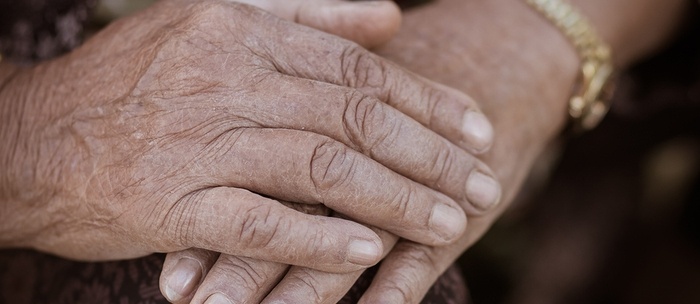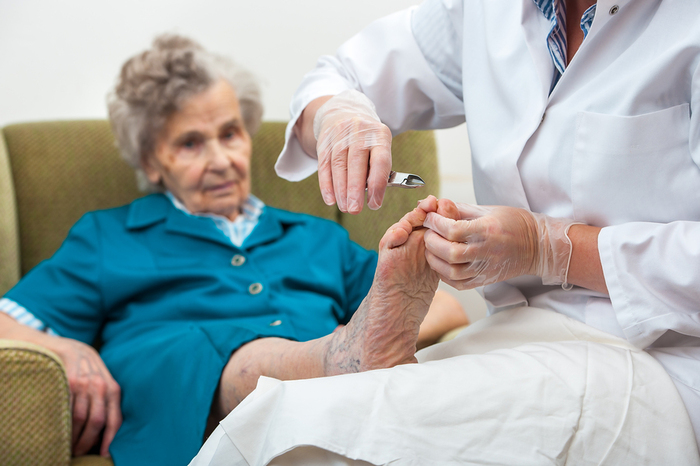
As human bodies age, they undergo many changes. While we often think of the appearance of the face, skin and hair as the primary areas demonstrating age-related changes, another body part can also reveal signs of advancing age: fingernails. However, not all of these changes are natural. In fact, some may indicate underlying health concerns. Read on for a closer look at four fingernail characteristics to watch for as a senior caregiver.
1. Nail Color Changes
Healthy fingernail and toenails should have pink nail plates and white tips. Changes in nail color may be linked with a number of different health issues.
For example, the yellowing of nails may be caused by respiratory conditions, lymphedema (swelling due to a blockage in the lymphatic system), and jaundice.
White opaque nails, meanwhile, may be caused by malnutrition, congestive heart failure, diabetes, liver disease, kidney failure, overactive thyroid, or iron-deficiency anemia.
Black, blue, blue-green, grey, purple, red, green and yellow-red nail coloring, as well as white spots, white lines, color bands, and white areas beneath the nails, may also be linked with health problems, and should also be discussed with your aging loved one’s health care team.
2. Onycholysis (Nail Pulling Away from the Nail Bed)
While this condition, in which the nail lifts away from the bed, does not usually cause pain, the separated section can catch on things. Regular, careful trimming can prevent this from occurring.
There are many possible causes associated with onycholysis, including injury, infection, thyroid disease, poor circulation, Raynaud’s syndrome, drug reactions, psoriasis, connective tissue disorders, and allergic reactions.
3. Koilonychia, AKA Spoon Nails
This condition occurs when nails become thin, brittle, and take on a concave or “scooped out” appearance instead of their natural convex structure.
Possible causes for koilonychia include iron deficiency, anemia, hemochromatosis, Plummer-Vinson syndrome, Raynaud’s syndrome, and systemic lupus.
4. Nail Clubbing
Do your aging loved one's fingertips look deformed or bulbous, or do the nails appear to be curving around the fingertips? Known as “clubbing,” this occurs when soft tissue increases beneath nail beds.
Possible causes of nail clubbing include low oxygen levels, Inflammatory Bowel Disease, lung disease, cardiovascular disease, liver disease, celiac disease, Graves disease, and endocarditis.
While some changes to the appearance of fingernails and toenails may not be cause for concern, others may require medical attention. It’s important to note that certain medical treatments and medications may change the appearance of aging skin and nails.
Caregivers can also help older loved ones maintain nail health by encouraging them to eat right and use proper care practices. Gently massaging moisturizers into hands and nails, meanwhile, can help alleviate dry, cracked, and/or brittle nails. Additionally, since many seniors struggle to cut their nails, helping them with this task is important to prevent ingrown toenails and other issues.

Lastly, recommends Dr. Dana Stern for Nails magazine, “Seeing a podiatrist for regular foot and nail care becomes important to prevent these issues and to maintain healthy feet in an elderly population.”
mmLearn.org offers a large library of free videos for caregivers of older adults, covering topics pertaining to senior care. Whether you are a healthcare professional or a family caregiver, if you are caring for an older adult we know that you will find mmLearn.org an essential learning and guidance tool for all of your caregiver training needs. For additional caregiver support resources, access our database of free online caregiver videos today.
